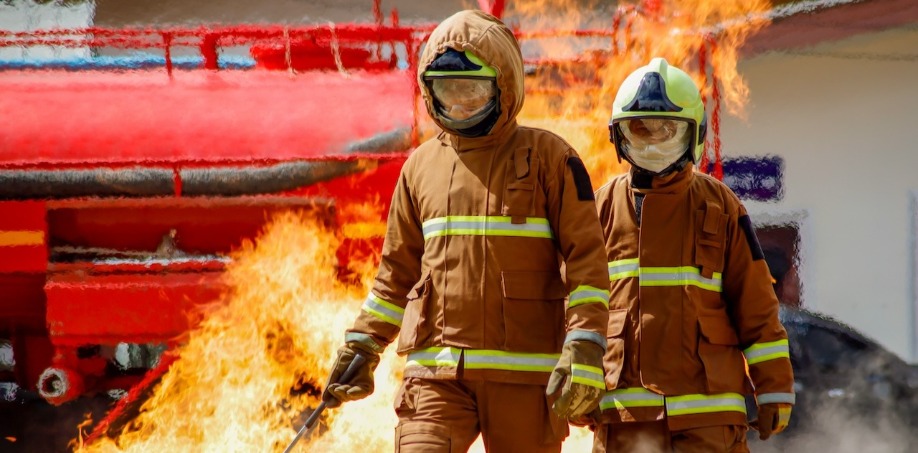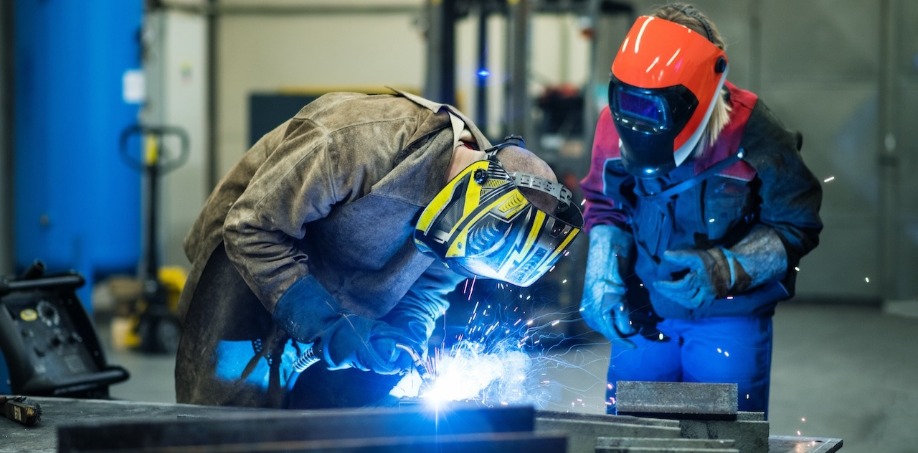Understanding Flame Resistant Clothing

Worker safety is the most important thing when on the jobsite. Among the various safety gear used, flame resistant (FR) clothing, stands out as a crucial component in protecting workers. This specialized apparel is designed to protect workers from fire-related hazards by resisting ignition and preventing the spread of flames. This blog post focuses on flame resistant clothing, how it works, and the industries that heavily rely on it.
What is Flame Resistant Clothing?
Flame resistant clothing is made from materials that are inherently resistant to catching fire or are chemically treated to achieve this property. Unlike regular fabrics that can ignite and continue to burn when exposed to an open flame, FR clothing self-extinguishes once the ignition source is removed. This crucial characteristic helps to minimize burn injuries and provides critical escape time in hazardous situations.

The Importance of Flame Resistant Clothing
Worker Safety: The primary purpose of FR clothing is to protect workers from burns and injuries in environments where fire hazards are prevalent. This includes industries such as oil and gas, electrical utilities, welding, and firefighting. By wearing FR clothing, workers can perform their tasks with the confidence that they are shielded from the dangers of sudden fire exposure.
Regulatory Compliance: Many industries are governed by strict safety regulations that mandate the use of flame resistant clothing. Organizations like the Occupational Safety and Health Administration (OSHA) in the United States have specific guidelines for protective clothing in various high-risk industries. Compliance with these regulations is not only a legal requirement but also a moral obligation to ensure worker safety.
Minimizing Burn Injuries: Burn injuries can be severe and life-altering. Flame resistant clothing significantly reduces the severity of burns by preventing the fabric from igniting and continuing to burn. This can be the difference between a minor incident and a major injury requiring extensive medical treatment and rehabilitation.
Industries That Use FR Clothing
Flame resistant clothing is essential in various industries where workers are exposed to fire, heat, and electrical hazards. Here are some of the key sectors that rely on FR Clothing:
Oil and Gas: The oil and gas industry is one of the primary users of FR clothing. Workers in this industry are often exposed to flammable gases and liquids, making the risk of fire and explosions significant. FR clothing provides essential protection in these high-risk environments.
Electrical Utilities: Electrical workers are at risk of arc flashes, which can cause severe burns. FR clothing with a high arc rating is crucial for protecting these workers from the intense heat and energy released during an arc flash incident.
Welding and Metalworking: Welders and metalworkers are regularly exposed to sparks, molten metal, and high heat. FR clothing helps protect them from burns and injuries, allowing them to work safely and efficiently.
Firefighting: Firefighters face some of the most extreme fire hazards. While their primary protective gear is their turnout gear, they also rely on FR clothing for additional layers of protection. This clothing must meet specific standards to ensure it provides adequate protection in the most dangerous conditions.

Flame resistant clothing is a vital component in ensuring the safety and protection of workers in various high-risk industries. By understanding the benefits of FR clothing, employers can make informed decisions to protect their workforce. Whether you work in the oil and gas industry, electrical sector, or any other hazardous environment, investing in high-quality flame resistant clothing is a proactive step towards creating a safer workplace. At Midland Tool & Supply, we carry a variety of different flame resistant clothing from top brands like Miller and Black Stallion. You can explore our selection of FR clothing, here.

